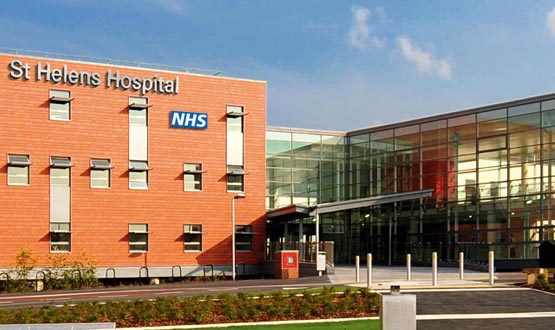Look, no vans
- 16 November 2010

St Helens and Knowsley Teaching Hospitals NHS Trust has told E-Health Insider that it has realised its £1.2m investment on an electronic document management system, just two years after it started rolling it out.
The trust signed a deal with Kodak and C-Cube to provide it with a scan on demand electronic records system in September 2008.
Since then, more than 130,000 records of ‘active’ patients have been scanned; the equivalent of 41m pages across all 27 hospital departments.
Neil Darville, director of informatics at the trust, told EHI: “We have already achieved our ROI of £1.2m in two years. We’ve been able to stop the vans that had to transport 7,000 notes a week and reduce secretarial departments. Once the [health records] library is completely closed, we will also reduce all overheads there.”
Although the trust initially took on 50 temporary staff on top of the 60 staff who already worked in the health records department, the full headcount of those now working in the new scanning records bureau is 51.
Easy money
Darville added: “We’ve undertaken a substantial clerical staffing review and haven’t been replacing people that have left. The medical secretary posts still exist, but we have been able to scale back the support to those and have been able to release cash savings much quicker than thought.”
Darville added that he hadn’t taken into account that although scanning records would reduce the amount of space taken up by paper, so too would destroying the increasing number of records that have been stored for more than eight years.
“We’ve stopped creating new paper records and we’ve been throwing away as many as we have been creating – and I didn’t factor that in,” he said. The trust expects to save £1.4 m per year on an ongoing basis, and aims to close its two floor records library building by 2014.
Moving forward
In addition, it will start using direct data entry within the next twelve to eighteen months, so that information can be entered directly into the system using keyboards, digital pens and other devices. This will again reduce the amount of people needing to scan information back into the system.
The scan on demand uses a Kodak system capable of scanning around 500 pages at a time, which are divided by barcodes to show when a patient record starts and finishes. The documents can be scanned into appropriate chapters and clinicians can add headers and footers to mark specific notes or information.
Daville added: “One patient’s record was 9ft tall, although that’s an exception, you can see the difficulty that that would cause if it had been kept in paper format. Now, when notes are made they can be easily added to the system one by one.”
Wider benefits
The trust also hopes that the system will generate savings to the wider health economy as it begins to roll it out. Two out of the 92 GP practices in the area, which fall under the remit of the shared service are already trialling the system, which will enable them to see the hospital records of patients registered at their practice.
Darville said that they are “in the thick of negotiating” roll out to them Five Boroughs Partnership NHS Trust, the only mental health trust that is live with Lorenzo, the iSoft electronic patient record that is due to be delivered to the North, Midlands and East of England.
In addition to seeing a return on its investment, St Helen’s and Knowsley has also realised significant safety and quality benefits. In particular, it has made big strides towards ensuring records are always where they are needed, the initial driver of the project.
Driven from the top
Francis Andrews, a consultant in critical care at the trust, said that the trust’s chief executive, Ann Marr had a key role in pushing forward the vision in being paperless.
Although the trust has a relatively good rate of ensuring case notes available at the point of care, around 2% of patients were being sent away due to a record being unavailable. Marr wanted to ensure that although the trust had a low rate (98%) of sending patients away if the clinicians did not have their case note.
Andrews said: “Previously, we had 40 formal complaints annually specifically around patents being sent home due to case notes being unavailable. Now that has gone completely.”
The trust has also been able to reduce admissions by accessing records in A&E and determining whether a patient needs to be admitted.
Working together with C-Cube, additional functionality such as an alert facility has also been incorporated into the system.
Andrews added: “There is a tab on the system which can put specialist information onto a record. For example, there are a number of individuals in our area that have a very serious metabolic condition and often they are treated badly or wrongly. We can now put information onto that alert and by clicking on it you can get immediate specialist advice on how to deal with the patient.”
According to Andrews, records are also much more secure. “For the first time we’ve been able to see who has accessed the record and how many times. Before there were incidents of family or unauthorised staff walking up to a bed and taking a look at notes, so it’s a far more secure process now.”
Other costs savings come from allowing clinicians to access records remotely, saving them when they come into the hospital and allowing clinicians staff to use teleconferencing to discuss a patients notes using the trust’s VoIP system.
Sharing the wealth
The trust is now working to make use of the system for orders and results, discharge summaries and data entry.
Darville added that they are showcasing the system to other NHS trusts: “More than 30 trusts have come to visit the hospital to enquire and the response we’ve had is breathtaking. We’ve looked at NHS Connecting for Health stuff and there is no solution there. Nobody is close to being this paper-lite.
“To us the National Programme has been relatively unhelpful, so we are no longer committed to Lorenzo.”




